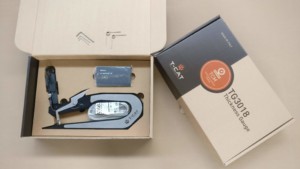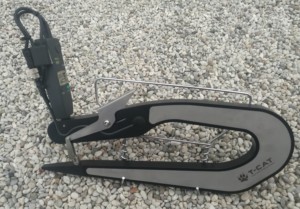Evolution of the T-Cat Tannery Automation System
In 1984, Tanmach (part of the First Source Worldwide family) began the project of developing a new way to measure thickness in the tannery. What began as the development of a more ergonomic handheld thickness gauge has evolved into a revolutionary system which allows for the digital recording and subsequent manipulation of data at every stage in the production of leather. Through countless trials in house and with input and feedback from partner tanneries, the scope of the project has increased to the point that we are now able to capture critical data from slaughter house, to finish. T-Cat systems are now measuring productivity at fleshing, moisture after wringing, area after setting, hide defects, drum formulation control and so much more. All data captured in real time is immediately available for viewing and manipulation at all levels of tannery personnel.
For a complete overview of the T-Cat system, I suggest visiting www.tcatpro.com to take your first step into the T-Cat world. For today, however, I want to focus on the roots of the system, the LT300 digital thickness gauge and the newest addition to the T-Cat family, the TG3018.


Going back in time more than 30 years, I spent more than a few hours each week rebuilding handheld thickness gauges from Italy as well as shipping out parts to many tanneries across North America. It was pretty clear that almost everyone used the same gauge because it was cheap and readily available. It was around that time that Italian machine manufacturers started developing a much better quality splitting machine even to go so far as to say that shaving would become a redundant operation. That’s when our customers starting looking for an alternative gauge that would be more accurate, ergonomic and robust in structure.
To make the measurement more accurate, we first needed to make the frame more rigid. While it didn’t seem like a difficult task at first, we did have a few fails. Early prototypes were very rigid but much too heavy… we had to consider that in some cases the operators held these in their hands and had to move them about quickly for several hours each day. Once we had the right balance of weight, comfort and stiffness sorted out with our cast aluminum frame, we tackled ergonomics. A proportioned thumb lever that could deliver the required 5N of snap force to the anvil while reducing thumb stress, rotating the readout 90 degrees to face the operator, changing the readout angle up 10 degrees, balancing the handle location and a smooth powder coated finish gave us a great base to work from. The real development came next, going digital and capturing the measurements directly into a PC.
This sparked a real interest and many tanneries jumped on board with the project. In one case, after a week-long demonstration and trial installation, the tannery rejected our system. Not because it didn’t work, not because it was too complicated and not because it was too expensive. In fact, everyone involved seemed impressed with the system. They said, “It really gives us a clear picture of where we stand regarding thickness. The resolution of that picture however, highlights how poorly we are performing as a tannery in our splitting and shaving departments. We simply don’t want our customers having access to that kind of information.”
It was a long trip home after that one! Not getting a sale was bad enough but wondering if the entire concept was flawed and doomed to fail was quite another thing! The good news is that common sense has prevailed and that experience turned out to be the exception, not the rule. The new gauge and information gathering system did highlight poor thickness control in other tanneries as well, but that was the point. You really have to know where you stand before you can begin to effectively improve your process and your output and that is exactly what we were offering back then, the information required in order to make effective decisions.
Since those days all the innovation has come from the software development which allows the user to customize and manipulate the data that has been collected in unbelievable ways. Not to mention the fact that thickness is now only one of several modules within the T-Cat umbrella. Until now that is, after almost 30 year since its introduction, the digital thickness gauge model LT300 and LT300D have been replaced by the T-Cat TG3018. Learning from all those years of customer feedback and with the help of a young team of design engineers, the new gauge adds an ergonomic feel, more reliable electronic system in a more robust and complete package. It also addresses one of the most common complaints we’ve had over the year, a lower cost for replacement parts and cables.
As we move into the next 30 years of digital gauging, I am sure you will be excited that the hardware has finally taken a huge step forward with a gauge that is more fitting with the technology that has come so far since the beginning. CLick the picture below to visit www.tcatpro.com for more information about the new exciting gauge and the rest of the T-Cat vision, you will not be disappointed.



